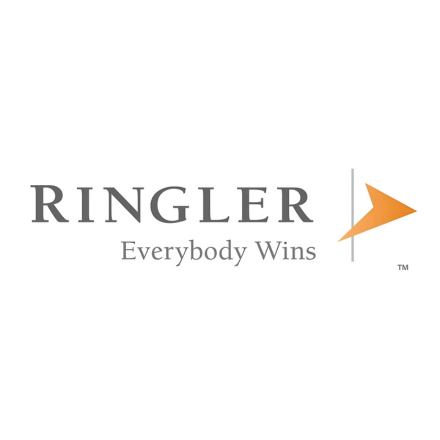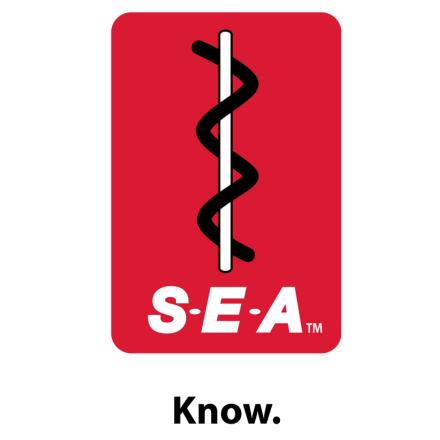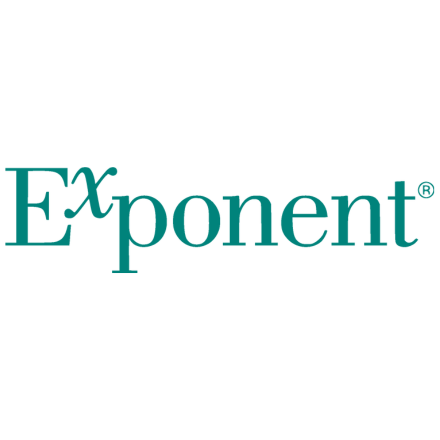Pennsylvania State Law Summary
At Themis Advocates Group, we are committed to providing invaluable resources to members and clients alike.
Name of Preparer:
Zarwin, Baum, DeVito, Kaplan, Schaer & Toddy, P.C
City and State of Firm:
Philadelphia, Pennsylvania
Overview of State of Pennsylvania Court System
Court System
A. Trial Courts
Supreme Court
A. Original but not exclusive jurisdiction over all cases of Habeas Corpus, mandamus or prohibition to courts of inferior jurisdiction, and quo warrant as to any officer of statewide jurisdiction. 42 Pa.C.S. § 721
B. May assume plenary jurisdiction over any matter pending before any court or magisterial district judge of this Commonwealth involving an issue of immediate public importance. 42 Pa.C.S. § 726
C. Administrative authority over entire Pennsylvania court system
Intermediate Courts
A. Commonwealth Court
i. Original jurisdiction over civil cases brought by and against the Commonwealth. 42 Pa.C.S. § 761(a)
B. Superior Court
i.The Superior Court shall have no original jurisdiction, except in cases of mandamus and prohibition to courts of inferior jurisdiction where such relief is ancillary to matters within its appellate jurisdiction, and except that it, or any judge thereof, shall have full power and authority when and as often as there may be occasion, to issue writs of habeas corpus under like conditions returnable to the said court. 42 Pa.C.S. § 741
Common Pleas Courts
A. Pennsylvania’s Courts of general jurisdiction
i. Original jurisdiction over all cases not exclusively assigned to another court. 42 Pa.C.S. § 931
B. Split into 60 judicial districts that generally follow the county boundaries
C. Division of Courts
i. Several counties divide their common pleas courts into subdivisions including family courts, orphan’s courts, and trial divisions per 42 Pa.C.S. § 951
D. Matters
i. Major criminal and civil case
ii. Appeals from courts of limited jurisdiction below
iii. Matters involving children and families
Base Level Courts (4 types)
A. Philadelphia Municipal Court
- Jurisdiction (42 Pa.C.S. §1123)
- Summary offenses other than those with jurisdiction of Traffic Court of Philadelphia
- Criminal offenses other than by a juvenile punishable by not more than five (5) years imprisonment
- Judgments under the Landlord Tenant Act of 1951
- Civil actions (except by or against the Commonwealth) where sum demanded does not exceed $12,000
B. Philadelphia Traffic Court
i. All summary offenses under Motor Vehicle Code and related city ordinances. Community courts under 42 Pa.C.S. 1105
C. Magisterial District Courts (in all counties but Philadelphia)
i. Non-jury criminal trials not involving delinquent acts under 42 Pa.C.S. §6301
Non-jury civil trials where amount in controversy does not exceed $12,000 involving:
- landlord-tenant actions
- assumpsit actions
- trespass actions
- fines and penalties by any government agency
iii. Preliminary arraignments and preliminary hearings
iv. Fix and accept bail except in murder or voluntary manslaughter cases
v. Issue arrest warrants
D. Pittsburgh Magistrates Courts
i. Original Jurisdiction. 42 Pa.C.S. §1143
1. Criminal complaints for felonies and misdemeanors committed within corporate limits of City of Pittsburgh
- issue warrants, conduct preliminary hearings, and commit to jail for these cases
2. Civil claims for recovery of fines imposed by ordinance within the City of Pittsburgh
3. Arrests made upon view or complaint by police of the city of Pittsburgh including but not limited to drunkenness, disorderly conduct, selling liquor contrary to law, created riots or disturbances...
4. Matters within the jurisdiction of the court when sitting as the Traffic Court of Pittsburgh
B. Appellate Courts
- Supreme Court of Pennsylvania
A. Consists of 6 associate judges and the Chief Justice of Pennsylvania. 42 Pa.C.S. §501
B. Jurisdiction:
i. All appeals from final orders of the Commonwealth Court. 42 Pa.C.S. §723(a)
ii. Discretionary appeals from final orders of the Superior and Commonwealth Court upon allowance of appeal by any two justices. 42 Pa.C.S. § 724(a).
iii. Direct appeals from constitutional and judicial agencies. 42 Pa.C.S. § 725
- Superior Court of Pennsylvania
A. Consists of 15 judges 42 Pa.C.S. § 541.
B. Exclusive appellate jurisdiction of all appeals from final orders of common please court, regardless of nature or amount involved except classes of appeals reserved for the Supreme Court. 42 Pa.C.S. 742
- Commonwealth Court of Pennsylvania
A. Consists of 9 judges. 42 Pa.C.S. § 561.
B. Exclusive jurisdiction of appeal from final orders of courts of common pleas in following cases per 42 Pa.C.S. § 762
i. Commonwealth civil cases by the commonwealth government and those cases in which original jurisdiction is vested in another tribunal by any exception of 42 Pa.C.S. § 761(a)(1)
ii. Governmental and Commonwealth regulatory criminal cases
iii. Secondary review of certain appeals from Commonwealth agencies
iv. Local government civil and criminal matters
v. Eminent Domain
vi. Immunity Waiver Matters
Procedural
A. Venue
- Pursuant to Pa. Code Rule 1006, Venue is proper in civil actions against an individual in and only in a magisterial district where:
a. the individual may be served, or
b. the cause of action arose, or
c. a transaction of occurrence took place out of which the cause of action arose or
d. the property or part of the property which is the subject matter of the action is located provided that equitable relief is sought with respect to the property
- An action against a partnership may be brought in and only in a magisterial district where:
a. The partnership regularly conducts business, or
b. The cause of action arose, or
c. A transaction of occurrence took place out of which the cause of action arose. Id.
- An action against a corporation or similar entity may be brought in and only in a magisterial district where:
a. Its registered office or principal place of business is located, or
Ib. It regularly conducts business, or
c. The cause of action arose, or
d. A transaction or occurrence took place out of which the cause of action arose. Id.
B. Statute of Limitations
- The following statutes of limitations are pertinent:
a. Injury to person or property: Two years. 42 Pa.C.S § 5524
b. Contract in writing under seal: Twenty years. 42 Pa.C.S. § 5529
c. Contract not in writing: Four years. 42 Pa.C.S. § 5525
d. Action to specific performance of a contract for sale of property: Five years. 42 Pa.C.S. § 5526
- Statutes of limitations in Pennsylvania begin to run from the time the action accrued or the right of appeal arose. 42 Pa.C.S. § 5502
- Tolling- Statutes of limitations periods can be extended through one of Pennsylvania’s tolling statutes. 42 Pa.C.S. § 5533 provides that the statute of limitations period is tolled during the time the Plaintiff is an unemancipated minor, if the cause of action accrued during this time. Generally, neither insanity nor imprisonment are covered by the tolling statute per 42 Pa.C.S. § 5533(a). The tolling statute also generally covers time periods in which the Defendant is absent from the state. 42 Pa.C.S. § 5533.
- Borrowing Statute (42 Pa.C.S. 5521)- This statute applies when the cause of action accrues in another state. §5521 states that the applicable statute of limitations shall be the statute of limitations in Pennsylvania or the state in which the action accrues, whichever first bars the claim
C. Time for Filing an Answer
- An answer to a complaint or petition must be filed within 20 days of service. 1 Pa. Code § 35.35. A respondent failing to answer within the applicable period shall be deemed in default, and relevant basic facts stated in the complaint or petition may be deemed admitted.
- Affirmative defenses must be set forth at the end of the answer to the complaint under a heading captioned “New Matter.” Pa. R.C.P. No. 1030. Available affirmative defenses are:
a. accord and satisfaction
b. arbitration and award
c. consent
d. discharge in bankruptcy
e. duress
f. estoppel
g. failure of consideration
h. fair comment
i. fraud
j. illegality
k. immunity of suit
l. impossibility of performance
m. justification
n. laches
o. license
p. payment
q. privilege
r. release
s. res judicata
t. statute of frauds
u. statute of limitations
v. truth and waiver
- A party waives all defenses and obligations listed above and allowed by 1030(b) not presented by preliminary objections or an answer. Pa. R.C.P. 1032(a). The affirmative defenses of assumption of the risk, comparative negligence, and contributory negligence need not be pleaded. Pa. R.C.P. 1030.
- Whenever it appears by suggestion of the parties or otherwise that the court lacks jurisdiction of the subject matter, the court shall order that the action be transferred to a court of the Commonwealth which has jurisdiction. If that is not possible, it shall dismiss the action. Pa. R.C.P. No. 1032(b). Additionally, 42 Pa.C.S. § 5103 allows an erroneously filed matter to be transferred to the proper tribunal.
D. Dismissal Re-Filing of Suit
- A discontinuance is the exclusive method of voluntary termination of an action, in whole or in part, by a plaintiff prior to the commencement of trial. Pa.R.C.P. No. 229(a).
- Following a voluntary nonsuit a plaintiff may commence a second action upon the same cause of action upon payment of the costs of the former action. Pa.
R.C.P. No. 231
Liability
A. Negligence
- Elements (Krentzv. Consolidated Rail Corp., 589 Pa. 576, 910 A.2d 20, 27 (2006).
The defendant had a duty for conform to a certain standard of conduct
- The defendant breached that duty
- Such breach caused the injury in question
- The plaintiff incurred actual loss or damage
- Elements to impose a duty (R.W.v. Manzak, 585 Pa. 335, 888 A.2d 740, 747 (Pa. 2005)
- The relationship between the parties
- Utility of the defendant’s conduct
- Nature and foreseeability of the risk in question
- Consequences of imposing a duty
- The overall public interest in imposing a duty
- Comparative Negligence
- Comparative negligence is a method for determining how much responsibility should be allocated to the defendant in light of the Plaintiff’s conduct. Id. at 589.
- The factual issue of the plaintiff’s role in causing his own harm is irrelevant unless and until it is determined that the defendant may be held liable if he helped to cause that harm. Id.
A plaintiff will be barred from suit where his own negligence in causing his injuries is greater than that of the Defendant’s. 42 Pa.C.S. § 7102.
B. Negligence Defenses
- Assumption of the Risk. The status of assumption of the assumption of the risk defense is somewhat contentious in Pennsylvania law.
Some courts have concluded that assumption of the risk is now a part of the duty analysis in a negligence case, while others have held that the assumption of the risk has been eliminated by the comparative negligence doctrine.
a. “When an invitee enters business premises, discovery dangerous condition which are both obvious and avoidable, and nevertheless proceeds voluntarily to encounter them, the doctrine of assumption of risk operates merely as a counterpart to the possessor’s lack of duty to protect the invitee from those risks. By voluntarily proceeding to encounter a known or obvious danger, the invitee is deemed to have agreed to accept the risk and to undertake to look out for himself. Longwell v. C.J. Long Paving Co., 2012 Pa. Super. 245, 9 (2012) (quoting Carrender v. Fitterer,
469 A.2d 120, 125 (Pa. 1993)).
b. Other courts have held that with some exceptions, the doctrine of assumption of the risk in Pennsylvania has been eliminated by the comparative negligence doctrine, 42 Pa.C.S. § 7102(a)-(b). Chenkevich v. Hidden Valley Resort, L.P., 607 Pa. 1, 33 (2010).
i. There are a few specific instances in which assumption of the risk is expressly preserved as a viable defense in tort. See, e.g. the Skier’s Responsibility Act, 42 Pa.C.S. § 7102(c).
- Sudden Emergency
a. The sudden emergency doctrine is available as a defense to a party who suddenly and unexpectedly finds him or herself confronted with a perilous situation which permits little or no opportunity to apprehend the situation and act accordingly. Lockhard v. List, 542 Pa. 141 (1995) (quoting Liuzzo v. McKay, 396 Pa. 183 (1959).
b. The sudden emergency rule will not apply if the emergency arises through the prior negligence of him who seeks the protection of the rule. Casey v. Siciliano, 310 Pa. 238, 241 (1933).
c. The sudden emergency doctrine does not need to be pleaded as a new matter. Leahy v. McClain, 732 A.2d 619 (Pa. Super. 1999).
- Last Clear Chance Doctrine
a. The last clear chance doctrine is no longer applicable in Pennsylvania. See Spearing v. Starcher, 367 Pa. Super. 22, 532 A.2d 36, 38 (1987)
C. Gross Negligence, Recklessness, Willful and Wanton Conduct
- Gross Negligence
a. Pennsylvania does not recognize a separate cause of action for gross negligence. Floyd v. Brown & Williamson Tobacco Corp., 159 F. Supp. 2d 823, 828 (E.D. Pa. 2001) (applying Pennsylvania law).
b. Gross negligence, recklessness, and willful and wanton conduct may have a role in a punitive damages analysis.
D. Negligent Hiring and Retention
- It has long been held in Pennsylvania that “an employer may be liable in negligence if it knew or should have known that an employee was dangerous, careless or incompetent and such employment might create a situation where the employee’s conduct would harm a third person.” Brezenski v. World Truck Transfer, Inc., 755 A.2d 36, 38 (Pa. Super. Ct. 2000).
The theory of negligent hiring, or supervision requires two findings: (1) that the employer knew or should have known of the employee’s incompetence or propensity and, (2) that harm to third persons was foreseeable. Smith v. Bethany, 48 Pa. D & C.3d 359, 366 (1988).
E. Negligent Entrustment
- Pennsylvania negligent entrustment law follows that of the Restatement (Second) of Torts, § 308. Section 308 provides that “it is negligence to permit a third person to use a thing or to engage in an activity which is under the control of the actor, if the actor knows or should know that such person intends or is likely to use the thing or to conduct himself in the activity in such a manner as to create an unreasonable risk of harm to others.” Comment a to § 308 states that the party giving consent must have reason to believe that by withholding consent he can prevent the third person from using the thing or engaging in the activity. Pennsylvania courts have expressly adopted § 308 and applied it on several occasions. Wittrien v. Burkholder, 2009 PA Super 23, 7 (2009).
- Under this theory of recovery, a plaintiff must show that the entrustment of the vehicle itself was negligent, not simply that the person operating the vehicle was negligent. Cooter v. State Farm Fire & Casualto Co., 344 So. 2d 496, 298 (1977).
F. Dram Shop
- Pennsylvania dram shop laws state that liability may be imposed on an establishment serving alcohol for injuries sustained both by intoxicated patrons of the establishment, and by third parties injured by an intoxicated patron after that patron has left the establishment.
- It is a violation of the dram shop act for any establishment to serve alcohol to any visibly intoxicated person or a minor. 47 P.S. § 4-493(1). Violation of the act is negligence per se. Fandozzi v. Kelly Hotel, Inc., 711 A.2d 524 (Pa. Super. Ct. 1998). However, even if the patron has been served alcoholic beverages while visibly intoxicated, no civil liability attaches unless the injuries were proximately caused by the patron’s intoxication. Id. Even if proximate cause is proven, liability will not attach unless the patron was served while visibly intoxicated in violation of the act. Holpp v. Fez, Inc., 440 Pa. Super. 512 (1995).
- Liability on sales of alcohol to minors is limited to situations in which the tavern knew or should have known that an adult would furnish the alcohol to a minor, or situations in which the minor did not appear to be of legal drinking age at the time of the sale in question. Barrie v. Pennsylvania Liquor Control Bd., 5 Pa. D & C 4th 174 (1990).
- Comparative negligence is applicable to negligence actions brought by third parties in situations such where the third party accepted a ride from a visibly intoxicated person. Terwilliger v. Kitchen, 781 A.2d 1201 (2001).
G. Joint and Several Liability
- On June 8, 2011 the Pennsylvania passed the fair share act (2011 Pa. SB 1131). The Fair Share Act amended 42 Pa.C.S. § 7102 regarding joint and several liability and comparative negligence. This law only applies to actions that accrue on or after June 28, 2011.
- Previously, a defendant found to be 1% liable to an injured party could be held liable to pay for 100% of the injuries. Under the Fair Share Act, defendants pay damages only to the proportion of their degree of fault assessed to them by a jury. However, if a defendant is found to be greater than 60% liable to an injured party, that defendant may still be required to pay for 100% of those injuries. There are four exceptions to the Fair Share Act:
- A suit including an intentional misrepresentation
- A case of intentional tort
- A suit concerning the release or threatened release of a hazardous substance
- A civil action in which defendant has violated section 497 of the Liquor Code
H. Wrongful Death and/or Survival Actions
1. Wrongful Death
- General rule: An action may be brought to recover damages for the death of an individual caused by the wrongful act or neglect or unlawful violence of another if no recovery for the same damages claimed in the wrongful death action were obtained by the injured party during his lifetime. 42 Pa.C.S. 8301(a).
a. Only a surviving spouse, child, or parent of the deceased may assert a cause of action for wrongful death. 42 Pa.C.S. § 8301(b).
If no person eligible under 8301(b) to bring an action for wrongful death, a personal representative of the deceased may bring an action to recover damages for reasonable hospital, nursing, medical, funeral expenses, and expenses of administration necessitated by reason of injuries causing death. 42 Pa.C.S. 8301(d).
- Survival Action
All causes of action or proceedings, real or personal, shall survive the death of the plaintiff or of the defendant, or the death or one or more joint plaintiffs or defendants. 42 Pa.C.S. § 8302.
I. Vicarious Liability
- To prove negligence, a Plaintiff may proceed against a defendant on theories of direct and vicarious liability, asserted either concomitantly or alternatively. Vicarious liability is a policy-based allocation of risk. Crowell v. City of Philadelphia, 531 Pa. 400, 613 A.3d 1178, 1181 (Pa. 1992).
- “Vicarious liability, sometimes referred to as imputed negligence, means in its simplest form that, by reason of some relation existing between A and B, the negligence of A is to be charged against B although B has played no part in it, has done nothing whatever to aid or encourage it, or indeed has done all that he possibly can to prevent it.” Id. (quoting Prosser and Keeton on Torts § 69, at 499 (5th Ed. 1984).
- Once the requisite relationship (i.e. employment agency) is demonstrated, “the innocent victim has recourse against the principal.” Mamalis v. Atlas VanLines,Inc., 522 Pa. 214, 560 A.2d 1380 (Pa. 1989); accord Crowell, 613 A.,2d at 1182.
J. Exclusivity of Workers’ Compensation
- The Pennsylvania workers’ compensation system generally provides the exclusive remedy against employers for injuries sustained in the course and scope of employment. If the injury is caused by a third party, the injured party is not precluded from bringing an action against that third party. 77 P.S. § 481(a)-(b).
- Pennsylvania does not recognize an exception from the exclusivity clause for intentional torts or emotional distress. Snyder v. Specialty Glass Prods., 441 Pa. Super. 613, 620 (1995).
Damages
A. Statutory Caps on Damages
- Generally
Generally, there is no statutory cap on damages in Pennsylvania. In addition to economic damages, a plaintiff may recover for disfigurement, loss of enjoyment, pain and suffering, and embarrassment and humiliation. Pa. R.C.P. No. 223.3.
- Determining Noneconomic Loss
A jury may consider the following factors when determining noneconomic loss
The age of the plaintiff ii.The severity of the injuries
- Whether the injuries are temporary or permanent
- The extent to which the injuries affect the ability of the plaintiff to perform basic activities of daily living and other activities in which the plaintiff previously engaged
- The duration and nature of medical treatment
- The duration and extent of the physical pain and mental anguish which the plaintiff has experienced in the past and will experience in the future
- The health and physical condition of the plaintiff prior to the injuries viii.In the case of disfigurement, the nature of the disfigurement and the consequences for the plaintiff Pa. R.C.P. No. 223.3
- Exceptions.
- Statutory caps do exist in actions against the Commonwealth of Pennsylvania or a Political Subdivision of the Commonwealth. Recovery against the Commonwealth is restricted to certain types of injuries and must not exceed $250,000 in favor of any one plaintiff or $1,000,000 per occurrence. 42 Pa.C.S. §8528. Recovery against any political subdivision is limited to certain types of injuries and must not exceed $500,000 per occurrence. 42 Pa.C.S. § 8553.
- Additional exceptions apply for medical malpractice cases.
5% of punitive damages must be paid into the MCARE Fund rather than to the injured party. Pa. Stat. Ann. tit. 40, § 1303.505(e).
Punitive damages against a physician cannot exceed 200 percent of compensatory damages absent intentional misconduct. Pa. Stat. Ann. tit. 40, § 1303.505(d).
B. Compensatory Damages for Bodily Injury
1. A plaintiff may recover both economic and noneconomic damages in a suit for bodily injury.
- Non economic damages: Pa. R.C.P. No. 223.3. i. Pain and suffering
- Embarrassment and humiliation
- Loss of ability to enjoy the pleasures of life iv. Disfigurement
Economic damages:
- Costs of medical expenses and treatment (Pa. SSJI (Civ) 7.20)
- Cost of future medical expenses and treatment (Pa. SSJI (Civ) 7.30).
This instruction must be given when a jury could reasonably infer that a plaintiff will require future medical treatment.
Pratt v. Stein, 444 A.2d 674, 697 (Pa. Super. 1982)
Cost of living with a disability
Loss of future earnings and lost earning capacity (Pa. SSJI (Civ) 7.40)
Past lost earnings and earning capacity. (Pa. SSJI (Civ) 7.110)) vi. Cost of replacement or repair of property (Pa. SSJI (Civ) 7.150) vii. Incidental costs (Pa. SSJI (Civ) 7.160))
- all other expenses that a plaintiff has incurred or is likely to incur as a natural result of the injury
viii. Funeral expenses
- Loss of Consortium
i. A claim for loss of consortium is a separate and distinct claim from the injured party’s claim for damages. Bedillion v. Frazee, 408 Pa. 281, 285, 183 A.2d 341, 343 (1962).
- loss of consortium claim is not a claim for damages for bodily injury but for an injury to “marital expectations.” Anchorstar v. Mack Trucks, 620 A.2d 1120 (Pa. 2001)
C. Collateral Source
- Generally
a. The collateral source rule provides that payments from a collateral source shall not diminish the damages otherwise recoverable from the wrongdoer. Johnson v. Beane, 541 Pa. 449, 664 A.2d 96, 100 (Pa. 1995).
b. Pennsylvania law is clear; the victim of a tort is entitled to the damages caused by the tortfeasor’s negligence regardless of compensation the victim receives from other sources. Greisser v. AMTRAK, 200 Pa. Super. 313, 761 A.2d 606, 609 (2000).
c. Consequently, plaintiffs in personal injury cases may recover more than once for the same injury from difference sources. Armstrong v. Antique Automobile Club, 670 F. Supp. 2d 387, 393-97 (M.D. Pa. 2009).
- Exceptions
a. Relevance
i. Evidence of recovery from collateral courses is admissible when that evidence is independently relevant to a material issue in the case. Gallagher v. Pa. Liquor Control Bd., 883 A.2d 550, 557-559 (Pa. 2005)
b. Motor Vehicle Accidents
i. Pennsylvania’s Motor Vehicle Financial Responsibility Law generally precludes a plaintiff from recovering in an action for damages against a tortfeasor arising out of the use of a motor vehicle of benefits paid or payable by a program, group contract, or other arrangement. 75 Pa.C.S.A. § 1722.
c. Medical Malpractice Actions
The Medical Care Availability and Reduction of Error Act has negated the substantive collateral source doctrine in medical malpractice liability actions. 40 Pa. Cons. Stat. § 1305.508(a). A plaintiff is precluded from recovering amounts recovered from a private or public benefit or gratuity prior to trial. Hartenstine v. Daneshdoost, 2008 Pa. Dist. & Cnty. Dec. LEXIS 60. A plaintiff is not precluded from recovering potential future benefits because it could leave the plaintiff with an eventual shortfall. Amaya v. York Hospital, 2006 U.S. Dist. LEXIS 2133 (M.D. Pa. 2006).
3. Treatment of Write-Downs and Write-Offs
a. Plaintiff’s are entitled to recover the reasonable value of medical services provided. When a provider accepts an amount less than the reasonable value of services rendered, the plaintiff’s compensatory damages are limited to the amount actually paid for the services. Moorhead v. Crozer Chester Medical Center, 765 A.2d 786, 789-90 (Pa. 2001) (Disavowed on other grounds).
D. Pre-Judgment/Post-Judgment Interest
1. Pre-Judgment Interest
- Court rules provide for the imposition of pre-judgment interest, commonly referred to as delay damages, in bodily injury or death cases. Delay damages are computed at the prime interest rate plus one percent from the date one year after the defendant was served with process to the date of verdict. Pre-judgment interest is not recoverable for periods: (a) after an offer of settlement made by the defendant is rejected by the plaintiff, if the plaintiff subsequently received a judgment which is not more than 125 percent of the rejected offer; or (b) during trial delays caused by the plaintiff. Pa. R. Civ. P. 238.
- Delay damages are not available for awards based on loss of consortium. Anchorstar v. Mack Trucks, Inc., 533 Pa. 177, 620 A.2d 1120, 1122 (Pa. 1993))
2. Post-Judgment Interest
- Except as otherwise provided by another statute, a judgment for a specific sum of money shall bear interest at the lawful rate from the date of the verdict or award, or from the date of the judgment, if the judgment is not entered upon a verdict or award. 42 Pa.C.S. § 8101.
E. Damages for Emotional Distress
Intentional Infliction of Emotional Distress
a. Elements (from Williams v. Guzzardi, 875 F.2d 46, 52 (3d Cir. 1989))
Conduct must be extreme and outrageous
ii.Conduct must be intentional or reckless
iii.Conduct must cause emotional distress
iv.Distress must be severe
b. Pennsylvania courts have been “cautious in permitting recover for intentional infliction of severe emotional distress.” Bradshaw v. General Motors , 805 F.2d 110, 114 (3d Cir. 1986).
c. Courts are more likely to find there was an intentional infliction of emotional distress in cases where the conduct was ongoing and where the parties were in some form of a dominant/subservient relationship (landlord/tenant, parent/child, etc.). Williams, 508 Pa. at 53.
d. A third party may bring a cause of action for intentional infliction of emotional distress only if they are a member of the injured party’s immediate family who is present at the time, whether or not such distress results in bodily harm to the third party. Taylor v. Albert Einstein Med. Ctr., 562 Pa. 176, 180 (2000). When one is not present at the scene of the tortuous conduct, he is buffered against the full impact and may not recover. Id. at 183.
e. Intentional infliction of emotional distress may be considered a separate cause of action where the emotional harm itself constitutes the injury.
- Negligent Infliction of Emotional Distress
a. To recover damages for negligent infliction ofemotional distress, a plaintiff must prove: 1) that the defendant was negligent, 2) the defendant's negligence placed the plaintiff in danger of physical impact, 3) the plaintiff suffered emotional distress as a result of the defendant's conduct and 4) physical injury or physical impact must be present in order to recover. Simmons v. Pacor, Inc., 543 Pa. 664, 674 A.2d 232, 238 (1996).
b. The “zone of danger” theory provides compensation to those who did not actually suffer a physical impact resulting in emotional distress so long as they were in personal danger of the physical impact. Toney v. Chester County Hosp., 2011 Pa. LEXIS 3101, 36 A.2d 83, 89 (2011).
F. Wrongful Death and/or Survival Action Damages
- Wrongful Death Action
- The damages recoverable in a Wrongful Death Act action are measured by the pecuniary loss suffered by the husband, widow, children or parents of the deceased through deprivation of the part of the earnings of the deceased which they would have received from him had he lived. These damages are equal to the present worth of the amount those entitled to damages probably would have received from the deceased's earnings and services for their support during the period of his life expectancy and while the family relationship continued between them, but without any allowance for mental suffering or grief.
- Children, but not parents of the decedent may also recover damages for loss of comfort, society, guidance and tutelage.
- A Plaintiff in a wrongful death action may recover, in addition to other damages, damages for reasonable hospital, nursing, medical, funeral expenses and expenses of administration necessitated by reason of injuries causing death. 42 Pa.C.S. § 8301(c).
- The damages recovered shall be distributed to the beneficiaries in the proportion they would take the personal estate of the decedent in the case of intestacy without liability to creditors of the deceased person. 42 Pa.C.S. § 8301(b).
- Survival Action
The measure of damages awarded in Survival Act action include decedent's pain and suffering, loss of gross earning or from date of injury until death, and loss of his earning power less personal maintenance expenses, from time of death through his estimated working life span. A survival action is a continuation of a suit that would have been filed by the injured party had he survived the injury.
G. Punitive Damages
- Generally
- Generally, Pennsylvania punitive damages law follows that of the § 908(2) of the Restatement (Second) of Torts. Martin v. John-Manville Corporation, 508 Pa. 154, 170 (1985)
- The function of punitive damages in Pennsylvania is to “deter, and punish, egregious behavior… Punitive damages are appropriate to punish and deter only extreme behavior and, even in the rare instances in which they are justified, are subject to strict judicial controls.” Id.
- An essential fact needed to support a claim for punitive damages is that the defendant’s conduct be outrageous. Outrageous conduct is an “act done with a bad motive or with a reckless indifference to the interests of others.” Smith v. Brown, 283 Pa. Super. 116, 120 (1980).
- Punitive damages may not be awarded for misconduct which constitutes ordinary negligence such as inadvertence, mistake, and errors of judgment. Martin at 170.
2. Cap on Punitive Damages
- Medical Malpractice
- 25% of punitive damages must be paid into the MCARE Fund rather than to the injured party. Pa. Stat. Ann. tit. 40, § 1303.505(e).
- Punitive damages against a physician cannot exceed 200 percent of compensatory damages absent intentional misconduct. Pa. Stat. Ann. tit. 40, § 1303.505(d).
H. Diminution in Value of Damaged Vehicle
- The measure of damages for diminution in value of vehicle include the difference in value of the vehicle before the incident and the value after the harm, or the reasonable cost of repairs plus any difference in value after repairs.
- “Recovery may include the cost of hiring another car in addition to the cost of repairs, and the loss of profits arising from interruption of the use of a truck has been allowed in addition to the cost of repairs…. Where a person is entitled to a judgment for harm to chattels not amounting to a total destruction in value, the damages include compensation for the difference between the value of the chattel before the harm and the value after the harm or, at the plaintiff's election, the reasonable cost of repair or restoration where feasible, with due allowance for any difference between the original value and the value after repairs, and the loss of use.” Holt v. Pariser, 161 Pa. Super. 315, 319 (1947) 319 (1947)
I. Loss of Use of Motor Vehicle
- Pennsylvania allows recovery of damages for the loss of use of personal property whether the property is repairable or not. Kintner v. Claverack Rural Electric Co-operative Inc., 329 Pa. Super. 417, 425 (1984).
- In Dennis v. Ford Motor Company, the Third Circuit predicted that Pennsylvania appellate courts would allow damages for the loss of use during the period it took to either replace or repair the damaged property. Dennis v. Ford Motor Co., 471 F.2d 733, 736 (3d Cir. 1973).
- A party seeking damages for repair to personal property must show that the method of repair and the time taken were reasonable. Likewise, a plaintiff claiming loss of use damages when the property is not repairable must show that the method of acquiring a replacement for the property and the time taken to replace were reasonable. Kintner, 329 Pa. Super. at 425.
Evidentiary Issues
A. Preventability Determination
- There is no Pennsylvania case law directly addressing whether a motor carrier’s preventability determination is admissible evidence.
- Based on determinations in other jurisdictions, it appears unlikely that a court would allow a preventability determination to be admissible at trial.
The most likely method of excluding Evidence of a Preventability Determination is under Evid. R. 403. Courts of other states have held preventability determinations inadmissible using this rule.
Villalba v. Consol. Freightways Corp. 2000 U.S. Dist. LEXIS 11773 (N.D. Ill. 2000), involved a truck-automobile collision. The driver of the automobile, Elsa Villalba, sued the owner of the truck, Consolidated Freightways, and its driver for negligence. After the accident, Consolidated Freightways conducted a post-accident review. Ms. Villalba sought to introduce evidence of Consolidated Freightways’ internal investigation as a means of inferring negligence. The Villalba court excluded the evidence, explaining, “The problem with that inference is that the standard for determining preventability and the standard for determining negligence...are not necessarily the same.” Id. The Villalba court concluded that the standard for negligence and the standard for preventability were not the same. The danger that these disparate benchmarks would confuse the jury in its obligation to determine legal liability constitutes unfair prejudice. Consequently, the Villalbacourt excluded the evidence of the accident preventability analysis.
- New York courts similarly disfavor this evidence: “The contention that an accident is “preventable” in an accident report adds little or nothing to the liability analysis at hand.” Beaumont v. Smyth (Onondaga Cty. (N.Y.) Sup. Ct. 2004), 781 N.Y.S.2d 622, fn 3
- Georgia courts have held that a company’s internal definition of preventability is too different from the legal standard for liability that admission of a preventability analysis would be unfairly prejudicial. Tyson v. Old Dominion Freight Line, Inc.(Ga. Ct. App. 2004), 270 Ga. App. 897, 900-01, 608 S.E.2d 266. In Tyson, the plaintiff, while driving a truck, struck the front of a second truck belonging to Old Dominion. The Tyson plaintiff sued Old Dominion and its driver for negligence. The Old Dominion Accident Review Committee – an internal review board charged with investigating accidents involving its drivers – conducted an accident preventability analysis of the incident. Old Dominion moved in limine to exclude evidence of the committee’s findings. The trial court granted Old Dominion’s motion in limine. The Georgia Court of Appeals upheld the trial court’s decision, noting that the Old Dominion’s internal definition of preventable accident differed from the legal standard for liability in tort. Given the difference, evidence of the committee’s accident preventability analysis was properly excluded as unfairly prejudicial.
B. Traffic Citation from Accident
In Pennsylvania, evidence of a conviction for a traffic violation or a minor misdemeanor is not admissible in a civil suit arising out of the same events. Loughner v. Schmelzer , 421 Pa. 283, 218 A.2d 768 (1966)
C. Failure to Wear a Seat Belt
- The failure to sear a seat belt is not admissible as evidence. “[T]he failure to use a "child passenger restraint system" or "safety seat belt system" shall not be considered, in any civil action, as contributory negligence, and shall not be admissible as evidence in any civil action. Moreover, the legislature has provided a definition of "safety seat belt system" which includes all known forms of mechanical restraint available, in order to preclude any misconstruction of its intent.” Grim v. Betz, 372 Pa. Super. 614, 622-3 (1988). See also 75 Pa.C.S. § 4581(e).
- The failure to wear a seat belt also may not be the basis for criminal prosecution except in a proceeding for violation § 4581. Id.
D. Failure of Motorcyclist to Wear a Helmet
- Pennsylvania law does not require persons over the age of 21 who have been licensed to operate a motorcycle for more than two years to wear a protective helmet. 75 Pa.C.S. § 3525(d)(2).
- Evidence that an injured person was not wearing a helmet at the time of the accident may be admissible at trial for purposes of damages but a jury cannot find an injured party negligent per se for not wearing a helmet. A defendant must prove a causal connection between the severity of the injuries and the failure of the plaintiff to wear a helmet. If the defendant cannot prove a causal connection between the lack of a helmet and the severity of the injuries, the evidence is inadmissible. Bieber v. Nace, 2012 U.S. Dist. LEXIS 29386 (M.D. Pa. 2012).
E. Evidence of Alcohol or Drug Intoxication
- The long-established rule in Pennsylvania accident cases regarding the admissibility of intoxication evidence is that such evidence of intoxication must reasonably establish a degree of intoxication which proves unfitness to drive or to walk. If it is capable of establishing such unfitness to drive, the intoxication evidence is relevant. Morreale v. Prince, 436 Pa. 51, 258 A.2d 508 (1969); Locke v. Claypool, 426 Pa. Super. 528, 532, 627 A.2d 801, 803 (1993).
However, in Whyte v. Robinson, 421 Pa. Super. 33, 617 A.2d 380 (1992) where tests were taken an extensive amount of time after the accident occurred, evidence of an odor of alcohol on the breath and a blood alcohol content of 0.144 percent alone was held insufficient to establish unfitness to drive. The court must still apply Pa.R.E. 403 to determine if the evidence of the defendant’s intoxication passes the probative value vs. danger of unfair prejudice test. Kuehn v.Morgan, 62 Pa. D. & C. 4th 509, 516 (2002).
- Where a defendant has already admitted liability, evidence as to that defendant’s intoxication is inadmissible when a jury’s lone job is to determine the appropriate damages. Knowles v. Levan, 2011 Pa. Super. 31, 15 A.3d 504, 507-8 (2011).
- Evidence of a defendant’s intoxication may be admissible in determining whether punitive damages are appropriate if the evidence proves unfitness to drive and it passes the Pa.R.E. 403 test. Kuehn 62 Pa. D. & C.4th 509, 517.
F. Testimony of Investigating Police Officer
- Where a police officer was not present at the time of an accident, did not witness the accident, and is not qualified as an expert in accident reconstruction, evidence as to the proximate cause of the accident and which party was at fault are inadmissible. Smith v. Clark, 411 Pa. 142, 147 (1963).
- An officer may testify as to observations made at the scene of the accident. Statements made to an investigating officer by a party for an action are admissible as an exception to hearsay under the Pennsylvania Rules of Evidence. Tracy v. Corcione, 29 Phila. 14, 23 (1994).
- If the investigating officer is also qualified as an expert in accident reconstruction, he or she may testify as to the cause of the accident as well as how it occurred. Id. at 21-22.
G. Expert Testimony
- In order for a witness to qualify as an expert, he must have some scientific, technical, or other specialized knowledge that assists the trier of fact to understand the evidence. Pa.R.E. 702.
- Pennsylvania applies the Frye standard to evaluate the admissibility of novel scientific evidence. Pennsylvania courts do not apply the Daubert test. Pennsylvania v. Einhorn, 2005 Phila. Ct. Com. Pl. LEXIS at 363 (2005).
Under Frye, novel scientific evidence is admissible if the methodology that underlies the evidence has general acceptance in the relevant scientific community. Commonwealth v. Einhorn, 2005 Phila. Ct. Com. Pl. LEXIS 368.
H. Collateral Source
1. Evidence of recovery from collateral sources is only admissible when that evidence is independently relevant to a material issue in the case. Gallagher v. Pa. Liquor Control Bd., 883 A.2d 550, 575-559 (Pa. 2005).
I. Recorded Statements
- Pa.R.E. 106: When a writing or recorded statement or part thereof is introduced by a party, an adverse party may require the introduction at that time of any other part or any other writing or recorded statement which ought in fairness to be considered contemporaneously with it.
- The admissibility of a recorded statement will likely turn on whether or not the statement is hearsay, whether an exception applies, and whether the recording can be property authenticated.
- Pa.R.E. 801(c) defines hearsay as a statement other than one made by the declarant while testifying at the trial or hearing, offered in evidence to prove the truth of the matter asserted.
- Under Pa.R.E. 801 the following statements are not hearsay:
- An admission of a party-opponent
- Prior statement by a witness that are introduced the impeach the witness because they are inconsistent with his present testimony or
- That are consistent with the witness’ present testimony and are introduced to bolster the witness’ credibility against a charge of recent fabrication or
- A previous statement identifying a person soon after perceiving that person
5. If a recording is offered for a reason other than proving the truth of its contents, it is not hearsay
J. Prior Convictions
- Pa.R.E. 403 prohibits introduction of evidence if its probative value is outweighed by the danger of unfair prejudice.
- Pa.R.E. 404(b)(1) prohibits introduction of past crimes of a defendant in order to show actions in conformity therewith.
- Evidence of other crimes, wrongs, or acts may be admitted for other purposes, such as proof of motive, opportunity, intent, preparation, plan, knowledge, identity or absence of mistake or accident. Pa.R.E. 404(b)(2).
- Evidence of other crimes of any witness is admissible if it involved dishonesty or a false statement. Pa. R.E. 609.
K. Driving History
- All relevant evidence is admissible in Pennsylvania except as provided for by law. Pa.R.E. 402.
- Attempts to admit a party’s driving record into evidence will likely conflict with Pa.R.E. 404(b) which prohibits evidence of crimes, wrongs, or past acts if offered to prove actions in conformity therewith.
- Exceptions
- A driving record may be admissible if it is for purposes other than proving actions in conformity therewith.
An employee’s driving record may be admissible in a negligent entrustment action against the driver’s employer. See comment to Pa.R.E. 404(a).
L. Fatigue
Generally, a Plaintiff may introduce evidence of a tortfeasor’s fatigue only if supported by sufficient evidence. In Croyle v. Smith, 78 Pa. D. & C. 196 (2005), the Plaintiff filed a motion attempting to introduce evidence of the driver’s sleeping locations in the nights leading up to the accident. The Croyle court argued that the evidence amounted to nothing more than a prejudicial inference and denied the Plaintiff’s motion.
M. Spoliation
- Spoliation of evidence is the non-preservation or significant alteration of evidence for pending or future litigation. Pyeritz v. Commonswealth, 32 A,3d 687, 692 (2011).
- Pennsylvania does not recognize an independent cause of action for spoliation of evidence. Id. However, sanctions are available and appropriate for inappropriate spoliation of evidence.
- “To determine the appropriate sanction for spoliation, the trial court must weigh three factors: (1) the degree of fault of the party who altered or destroyed the evidence; (2) the degree of prejudice suffered by the opposing party; and (3) whether there is a lesser sanction that will avoid substantial unfairness to the opposing party and, where the offending party is seriously at fault, will serve to deter such conduct by others in the future. “ Creazzo v. Medtronic, Inc., 2006 PA Super 152, P10 (Pa. Super. Ct. 2006) (internal citations omitted).
a. “[E]valuation of the first prong, "the fault of the party who altered or destroyed the evidence," requires consideration of two components, the extent of the offending party's duty or responsibility to preserve the relevant evidence, and the presence or absence of bad faith.” Id
Settlement
A. Offer of Judgment
- An offer of Judgment is a settlement offer proposed by a defending party in which that party proposes a judgment on specified terms in lieu of a trial.
- Pa. R.C.P. No. 238: If a plaintiff does not recover greater than 125% of a defendant’s settlement offer, the plaintiff is precluded from recovering delay damages for the time period following the date the offer is made.
- Generally, an offer of settlement or compromise are not admissible as evidence in civil trials. Courts are concerned that jury would view an offer of settlement as an admission of liability on the part of an insurer. Danks v. Government Employees Ins. Co., 307 Pa. Super. 421, 425-6 (1982).
B. Liens
- Workers’ Compensation: 77 P.S. § 671
- Where a compensable injury is caused in whole or in part by the act or omission of a third party, the employer shall be subrogated to the right of the employee and his estate against such third party to the extent of the compensation payable by the employer.
- Any recovery against a third party in excess of compensation paid by the employer shall be paid to the employee or his estate.
- If an employer recovers as a statutory subrogee under 77 P.S. § 671, that employer is required to pay their proportion of the claimant’s fees in relation to the total recovery.
- Motor Vehicle Actions: Generally subrogation clauses are valid in Pennsylvania with exceptions.
- There is no right to subrogation in actions arising out of the maintenance or use of a motor vehicles with respect to workers’ compensation benefits, benefits available under section 1711 (required benefits), 1712 (availability of benefits), 1715 (availability of adequate limits), or benefits paid or payable by a program, group contract or other arrangement whether primary or excess under section 1719 (coordination of benefits). 75 Pa.C.S. 1720.
- HMO’s are expressly excluded from the above statute, and subrogation clauses in HMO contracts are valid. See Wirth v. Aetna U.S. Healthcare, 2004 U.S. Dist. LEXIS 8866 (2004).
- Pennsylvania Victims of Crime: A person convicted of a crime may be required to pay restitution to the victim and any other organization that may have disbursed money to or on behalf of the victim. If restitution to more than one person is set at the same time, payment shall be made in the following order:
- The victim
- The Crime Victim’s Compensation Board
- Any other governmental agency which has provided reimbursement to the victim as a result of the defendant’s criminal conduct (including medicare, See Commonwealth v. Brown, 603 Pa. 31 (2009))
- Any insurance company which has provided reimbursement to the victim as a result of the defendant’s criminal conduct.
- 18 Pa.C.S. § 1106
- Med Pay Liens and UM/UIM Set-Offs
- In Heller v. P League of Cities and Municipalities, 32 A.3d 1213 (P 2011), the Pennsylvania Supreme Court held that an insurer has no right of subrogation against its insured to reduce the amount of UIM coverage paid to the insured, even though it may result in a “double recovery.”
- To allow such an insurer a right of subrogation would result in a windfall and payments of premiums by the injured party for what amounts to “illusory coverage.” Id.
- Medicaid Liens
- The Pennsylvania Code gives a right of recovery to the Pennsylvania Department of Welfare to impose liens on awards obtained by Medicaid recipients from third parties for medical benefits paid by the Department. 62 P.S. § 1409.
- This right has been upheld by the Third Circuit. See Tristani v. Richman, 652 F.3d 360 (2011).
- Medicare Liens
a. The Medicare Secondary Payer Act provides that Medicare is a secondary payer for Medicare beneficiaries when a primary payer is available. Primary payers include health insurance worker’s compensation insurance, any liability or no-fault insurance and any tortfeasor. See 42 USCS § 1395y(b)(2), See Also Zaleppa v.Seiwell, 2010 PA Super 208 (2010).
b. Under the Medicare Secondary Payer Act, the United States Government may bring an action on its own against any or all entities that are or were required or responsible to make payment with respect to the same item or service under a primary plan. Id.
C. Minor Settlement
- When a party to an action, a minor shall be represented by a guardian who shall supervise and control the conduct of the action in his behalf. Pa. R.C.P. No. 2027.
- A minor may select a guardian, but such selection shall not bar the court from removing the guardian for cause. If a minor is not represented, the court shall appoint a guardian on its own motion, or upon petition of the minor party, another party to the action, or a relative of the minor. Pa. R.C.P. No. 2031.
- Any judgment entered in an action shall be the obligation of the minor only. A guardian will not be individually liable for the payment of any judgment entered against the minor. Pa. R.C.P. No. 2038.
- In context of decedents and estates, no guardian is required when the amount in question does not exceed $25,000. 20 Pa.C.S. § 5101.
- No action to which a minor is a party shall be compromised, settled, or discontinued except after approval by the court pursuant to a petition presented by the minor’s guardian. Pa. R.C.P. No. 2039(a).
- If the amount in question does exceed $25,000, the excess shall be placed into a trust federally insured bank account, trust agreement executed with a corporate fiduciary, or another method allowable under Pa. R.C.P. No. 2039(b).
D. Negotiating Directly with Attorneys
It is normal and accepted practice in Pennsylvania for claims professionals to negotiate settlements directly with attorneys. This practice is bolstered by the Pennsylvania Rules of Professional Conduct 4.2 which provides “[i]n representing a client, a lawyer shall not communicate about the subject of the representation with a person the lawyer knows to be represented by another lawyer in the matter, unless the lawyer has the consent of the other lawyer or is authorized to do so by law or a court order.”
E. Confidentiality Agreements
Confidentiality agreements are contracts and therefore can be set aside for fraud, duress, or undue influence. See Omicron v. Weiner, 2004 Pa. Super. 389 (2004).
F. Releases
- Releases are generally valid absent fraud, accident, or mutual mistake.
- "The courts of Pennsylvania have traditionally determined the effect of a release using the ordinary meaning of its language and interpreted the release as covering only such matters as can fairly be said to have been within the contemplation of the parties when the release was given." Fortney v. Callenberger, 2002 PA Super 182, 801 A.2d 594, 597 (Pa. Super. 2002) (emphasis in original).
- “However improvident the release may be or subsequently prove to be for either party, their agreement, absent fraud, accident or mutual mistake, is the law of their case. If such a release can be nullified or circumvented, then every written release and every written agreement of any kind, no matter how clear and pertinent, can be set aside whenever one of the parties changes its mind or the injured party receives an inadequate settlement.” Omicron Sys. v. Weiner, 2004 PA Super 389 (citing Taylor v. Solberg, 566 Pa. 150, 778 A.2d 664, 667-68 (Pa. 2001))
G. Voidable Releases
A party attempting to void a release must proffer evidence demonstrating fraud, accident, mistake, or ambiguity in the language of the release in order to prevail. Johnson v. Perfect Order, Inc., 2011 Phila. Ct. Com. Pl. LEXIS 28 at 8.
Transportation Law
A. State DOT Regulatory Requirements
. The Pennsylvania Department of Transportation (PennDOT) regulatory information can be found at www.dot.state.pa.us. PennDOT has adopted to FMSCR under 67 Pa. Code § 231.10.
B. State Speed Limits
- Pennsylvania’s speed limits are governed by 75 Pa.C.S. § 3362-5, which provide in pertinent part that it is unlawful to operate a motor vehicle in excess of the following speed limits:
- 35 mph in any urban district
- 65 mph for all freeways with 65mph signs posted
- 25 mph in a residence district if the highway is not 1) a numbered traffic route; and (ii) is functionally classified by the department as a local highway.
- 15 mpg in a school zone
C. Overview of State CDL Requirements
- When is a CDL Required? The classes of CDL and the commercial motor vehicles they authorize the operation of are as follows per 75 Pa.C.S. § 1603:
If the vehicle has a gross vehicle weight rating of 26,001 or more pounds or such lesser rating as the department shall adopt under the provisions of section 6103(c)
- If the vehicle is designed to transport 16 or more passengers, including the driver
- If it is a school bus
- If the vehicle is transporting hazardous materials and is required to be placarded as such per department regulations
- License Endorsements and Restrictions per 75 Pa.C.S. § 1610(b)
- (H): Authorizes the driver to transport hazardous materials
- (L): Restricts driver to vehicles not equipped with air brakes.
- (P): Authorizes driver to operate vehicles carrying passengers.
- (Q): Requires driver to wear corrective lenses
- (S): Authorizes driver to operate school bus
- (T): Authorizes driver to operate double and triple trailers
- Applicant Record Checks: 75 Pa.C.S. § 1610(c)
- Before issuing any CDL, the department shall obtain driving records from the Commercial Driver’s License Information System and the National Driver Register
- Before issuing any CDL with a hazardous material endorsement, the department must have received notification from the United States Secretary of Transportation that the individual does not pose a security risk warranting denial of the endorsement.
- Classes of CDL: http://www.dmv.state.pa.us/driverLicensePhotoIDCenter/license_classes.shtml
Class A: A class A license holder may operate any combination of vehicles with a gross weight of 26,001 lbs. or more. Class A license holders are qualified to operate vehicles for which a class B or C license is required. Additional endorsements may be required.
Class B: A class B license holder is qualified to operate any single vehicle with a gross weight of 26,001 lbs. or more. Class B license holders are qualified to operate vehicles for which a class C license is required. Additional endorsements may be required.
Class C: A class C license holder may operate any single vehicle with a gross weight not exceeding 26,000 lbs. Additional endorsements may be required.
Insurance Issues
A. State Minimum Limits of Financial Responsibility
- Every motor vehicle which is operated or currently registered must be covered by adequate financial responsibility. 75 Pa.C.s. § 1786.
- 75 Pa.C.S. §1702: The minimum limits of financial responsibility required under Pennsylvania law are as follows:
a. Bodily Injury: $15,000 per person/ $30,000 per accident
b. Property Damage: $5,000
B. Uninsured Motorist Coverage
- UM/UIM Coverage Permitted, but not required. Every Pennsylvania motor vehicle liability insurance policy must offer both underinsured and uninsured motorist coverage. The consumer may decline to purchase either or both. 75 Pa.C.S. §1731(a)
- UM/UIM Coverage
a. An uninsured vehicle is any of the following:
- A motor vehicle for which there is no liability insurance of self-insurance applicable at the time of the accident;
- a motor vehicle for which the insurance company denies coverage or becomes insolvent;
- an unidentified motor vehicle as long as the accident is reported to the authorities and the insurance company within thirty days.
b. An underinsured motor vehicle is one for which the limits of available liability insurance and self-insurance are insufficient to pay the losses and damages. §1731(b) and (c)
i. 75 Pa.C.S. § 1702
c. When multiple policies apply, payment is obtained first from the policy covering the vehicle occupied by the injured persona at the time of the accident and then from the policy or policies covering any motor vehicle not involved in the accident under which the injuries person is an insured. 75 Pa.C.S. § 1733.
- Stacking
a. When more than one vehicle is insured under one or more policies providing uninsured or underinsured motorist coverage, the stated limit for uninsured or underinsured coverage shall apply separately to each vehicle so insured. The limits of coverage available under this subchapter for an insured shall be the sum of the limits for each motor vehicle as to which the injured person is an insured. 75 Pa.C.S. §1738(a).
b. Stacking of coverage is permitted, but may also be waived in which case the limits of coverage available under the policy for an insured shall be the stated limits for the motor vehicle as to which the injured person is an insured. 75 Pa.C.S. § 1738(b).
- Exclusions
a. 75 Pa.C.S. 1731(d) limits a plaintiff from recovering both UM and UIM benefits from the same policy for the same accident. It doesn’t matter which coverage is offered first. State Farm Mutual Automobile Insurance Co. v. Kosick, 2006 U.S. Dist. LEXIS 21090 (W.D. Pa. 2006).
b. UIM coverage may be denied where “use” of the vehicle was incidental to the accident. The “use” must be the instrumentality that caused the injury. Where an insured skidded on road debris while riding a motorcycle, the insured’s claim for UIM benefits were denied since the accident was not caused from the “use” of the vehicle. American National Property and Cas. Co. v. Terwillinger, 2007 U.S. Dist. LEXIS 9018 (W.D. Pa. 2007).
C. No Fault Insurance
- Pennsylvania law requires motor vehicle insurers to offer both full tort and limited tort options. 75 Pa.C.S. § 1705.
- The limited tort option restricts recovery to medical and out of pocket expenses. An injured party may not seek recovery for pain and suffering or other nonmonetary damages unless the injuries fall within the definition of “serious injury” as set forth in the policy. 75 Pa.C.S. § 1705 (b).
- The full tort option allows the injured party to seek financial compensation for injuries caused by other drivers including pain and suffering and other nonmonetary damages. 75 Pa.C.S. § 1705(c).
D. Disclosure of Limits and Layers of Coverage
A defendant may be required to disclose policy limits if such disclosure will “foster settlement and therefore reduce the demand on juridical resources.” Harrison v. Nichols, 49 Pa. D. & C.2d 217, 220-1 (1969).
E. Unfair Claims Practices
1. Generally
a. 31 P Code § 146.1 (2012) et. seq. prohibits unfair and deceptive claims practices by insurance companies. The statute does not apply to workers’ compensation insurance and fidelity, surety, and guaranty bonds. Id.
2. File and Record Retention
a. Insurers must maintain claim data that is accessible and retrievable for examination by the Commissioner or by his appointed designees. The files shall contain notes and work papers pertaining to the claim in the detail that pertinent events and the dates of the events can be reconstructed. 31 P Code § 146.3.
3. Misrepresentation of Policy Provisions
An insurer must fully disclose all pertinent benefits, coverages, or other provisions of an insurance policy or insurance contract under which a claim is presented to any first party claimants. An insurer may not, except where there is a time limit specified in the policy, make statements
-- written or otherwise -- requiring a claimant to give written notice of loss or proof of loss within a specified time limit and which seek to relieve the company of its obligations if a time limit is not complied with unless the failure to comply with the time limit prejudices the rights of the insurer. 31 Pa. Code § 146.4.
4. Communication
Every insurer, upon receiving notification of a claim, shall, within 10 working days, acknowledge the receipt of such notice unless payment is made within that ten days. If the communication is not by writing, a notation of the communication shall be made in the claim file of the insurer and dated. An appropriate reply shall be made within 10 working days of other pertinent communications from a claimant that reasonably suggest that a response is expected. 31 P Code § 146.5.
5. Time for Investigation
Every insurer shall complete investigation of a claim within 30 days from notification unless the investigation cannot be reasonably completed within that time. After 30 days, and every 45 days thereafter, the insurer shall furnish to the insured a written explanation for the delay and state when a decision on the claim may be expected. 31 P Code. § 146.6.
6. Comparative Negligence
Where comparative negligence is applied to a claim settlement offer or denial, insurers shall fully disclose the claimants the basis in fact or law for the offer or denial and settlement standards relating to the claims. Insurers may not use comparative negligence to compel claimants to litigation by offering substantially less than the amount due and ultimately recovered by the insured. 31 Pa. Code § 146.9.
7. Settlement of Denial of Claims
Insurers may not fail to settle first-party claims on the basis that responsibility for payment will be assumed by others. 31 Pa. Code §
146.7. Within 15 working days after receipt by the insurer of properly executed proofs of loss, the first party-claimant shall be advised of the acceptance of denial of the claim by the insurer. An insurer may deny a claim due to a specific policy exclusion provided that the specific policy provision is cited in the denial. 31 Pa. Code § 146.7(a).
F. Bad Faith Claims
- An insured may seek recovery of interest, fees, costs and punitive damages as a result of claims handled with bad faith by an insurer. 42 Pa.C.S. § 8371.
- Although bad faith is not explicitly defined in the statute, several Pennsylvania courts have provided explanations. In order to recover under the bad faith statute the “plaintiff must show that the defendant did not have a reasonable basis for denying benefits under the policy and that the defendant knew or recklessly disregarded its lack of a reasonable basis for denying the claim.” Terletsky v. Prudential Property and Casualty Insurance Co., 649 A.2d 680 (Pa. Super. 1994).
- Bad faith must be shown by clear and convincing evidence, not merely insinuated. Cowden v. Aetna Casualty and Surety Company, 389 Pa. 459, 472, 134 A.2d 223, 229 (1957).
G. Coverage – Duty of Insured
- An insured has a contractual duty of cooperate with its insurer. By way of a cooperation clause in an insurance policy, "an insured binds itself to assist the insurer fully in its handling of the claim and agrees to take no action which would vitiate a valid defense." Forest City Grant Liberty Assocs. v. Genro II, Inc., 438 Pa. Super. 553, 559, 652 A.2d 948, 951 (1995).
- “An insured's duty to cooperate is breached where the insured neglects to disclose information needed by the insurer to prepare a defense, does not aid in securing witnesses, refuses to attend hearings or to appear and testify at trial or otherwise fails to render all reasonable assistance necessary to the defense of the suit." Id.
- Although a breach of a duty to cooperate will relieve the insurer from liability under the policy, a failure to cooperate must be substantial and will only serve as a defense where the insurer has suffered prejudice because of the breach." Id.
a. Prejudice can be shown where the lack of cooperation "fails to allow the insurance company to participate meaningfully in legal proceedings that may result in its payment of the claim at issue." Championv. Chandler, 1999 U.S. Dist. LEXIS 15824 at 6 (E.D. Pa. 1999).
H. Fellow Employee Exclusions
Business automobile policies of insurance often exclude coverage for bodily injury to any fellow employee of the insured arising out of and in the course of the fellow employee’s employment. Pennsylvania courts have upheld fellow employee exclusion clauses. See Atl. State. Ins. Co. v. Northeast Networking Sys., 893 A.2d 741, 748 (2006).
PDF version of the overview
|













